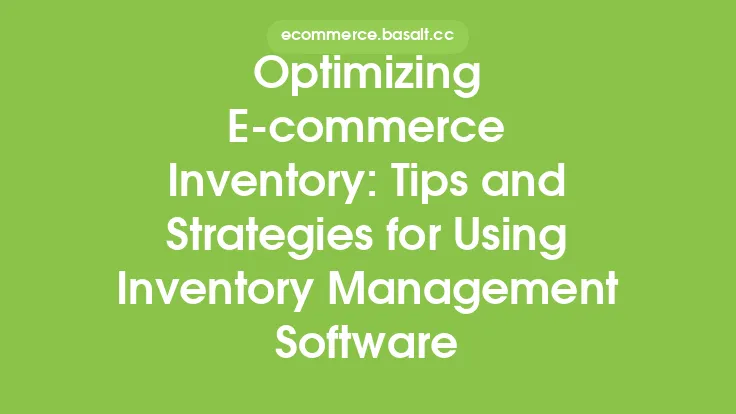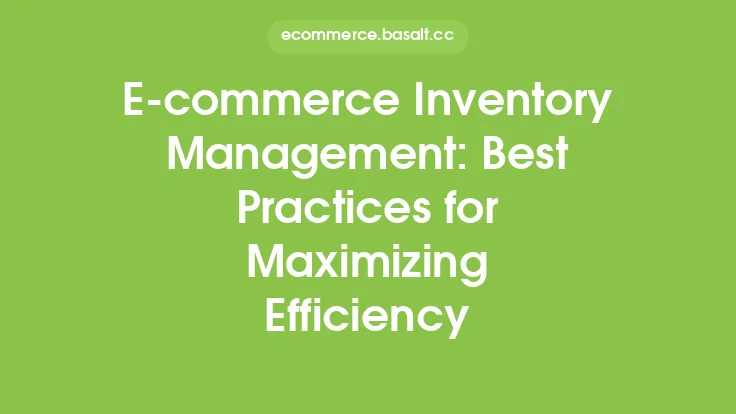In today's fast-paced e-commerce landscape, managing orders efficiently across multiple sales channels is crucial for businesses to stay competitive. With the rise of omnichannel retailing, customers expect a seamless shopping experience across various platforms, including online marketplaces, social media, and physical stores. To meet these expectations, e-commerce businesses must optimize their order management processes to ensure timely and accurate fulfillment of orders. This involves streamlining order processing, inventory management, and shipping logistics to provide a superior customer experience.
Introduction to Multi-Channel Order Management
Multi-channel order management refers to the process of managing orders from various sales channels, such as e-commerce websites, online marketplaces, social media, and physical stores. This involves integrating multiple systems, including order management systems, inventory management systems, and shipping carriers, to provide a unified view of customer orders and inventory levels. Effective multi-channel order management enables businesses to process orders quickly and accurately, reduce errors, and improve customer satisfaction.
Challenges of Multi-Channel Order Management
Managing orders across multiple channels can be complex and challenging. Some of the common challenges faced by e-commerce businesses include:
- Integrating multiple systems and platforms to provide a unified view of customer orders and inventory levels
- Managing inventory levels across multiple channels to prevent stockouts and overstocking
- Processing orders quickly and accurately to meet customer expectations
- Providing real-time order tracking and updates to customers
- Handling returns and exchanges efficiently to minimize losses
Strategies for Optimizing Multi-Channel Order Management
To optimize multi-channel order management, e-commerce businesses can implement several strategies, including:
- Implementing a cloud-based order management system that integrates with multiple sales channels and provides real-time inventory updates
- Using automated workflows to streamline order processing and reduce errors
- Implementing a distributed order management system that enables businesses to manage inventory levels across multiple channels
- Providing real-time order tracking and updates to customers through email, SMS, or mobile apps
- Offering flexible shipping options, such as same-day shipping or in-store pickup, to improve customer satisfaction
Best Practices for Multi-Channel Order Management
To ensure effective multi-channel order management, e-commerce businesses should follow several best practices, including:
- Providing a unified view of customer orders and inventory levels across all sales channels
- Implementing automated workflows to streamline order processing and reduce errors
- Using data analytics to optimize inventory levels and improve order fulfillment rates
- Providing real-time order tracking and updates to customers
- Offering flexible shipping options and return policies to improve customer satisfaction
Technology Solutions for Multi-Channel Order Management
Several technology solutions are available to support multi-channel order management, including:
- Cloud-based order management systems that integrate with multiple sales channels and provide real-time inventory updates
- Distributed order management systems that enable businesses to manage inventory levels across multiple channels
- Automated workflow tools that streamline order processing and reduce errors
- Inventory management systems that provide real-time inventory updates and optimize inventory levels
- Shipping carrier integrations that enable businesses to print shipping labels and track orders in real-time
Measuring the Success of Multi-Channel Order Management
To measure the success of multi-channel order management, e-commerce businesses should track several key performance indicators (KPIs), including:
- Order fulfillment rates: The percentage of orders fulfilled on time and in full
- Inventory turnover: The number of times inventory is sold and replaced within a given period
- Customer satisfaction: Measured through surveys, reviews, and feedback
- Return rates: The percentage of orders returned due to errors or customer dissatisfaction
- Shipping costs: The cost of shipping orders, including packaging materials and carrier fees
Conclusion
Optimizing order management for multi-channel e-commerce sales is crucial for businesses to stay competitive in today's fast-paced e-commerce landscape. By implementing effective strategies, following best practices, and leveraging technology solutions, e-commerce businesses can streamline order processing, improve customer satisfaction, and reduce costs. By measuring the success of multi-channel order management through key performance indicators, businesses can identify areas for improvement and make data-driven decisions to optimize their order management processes.





